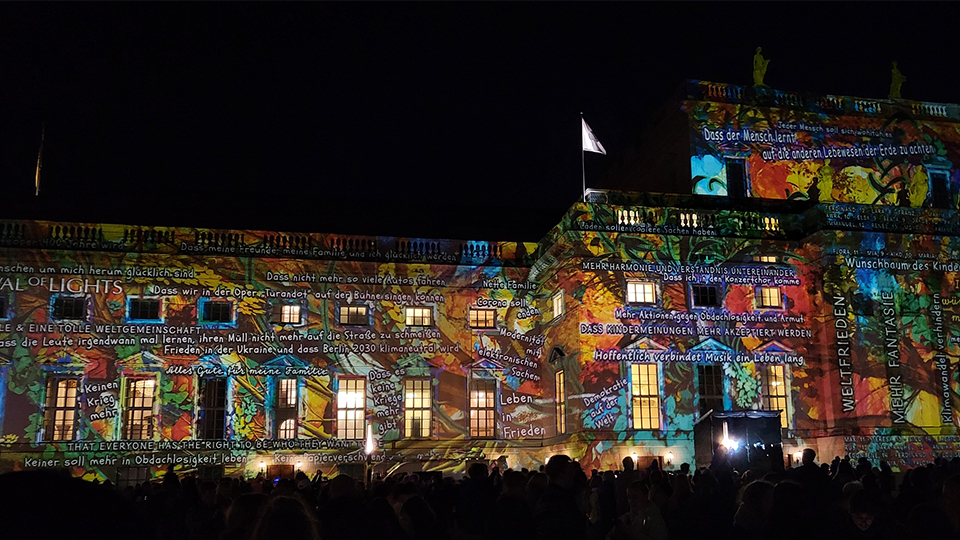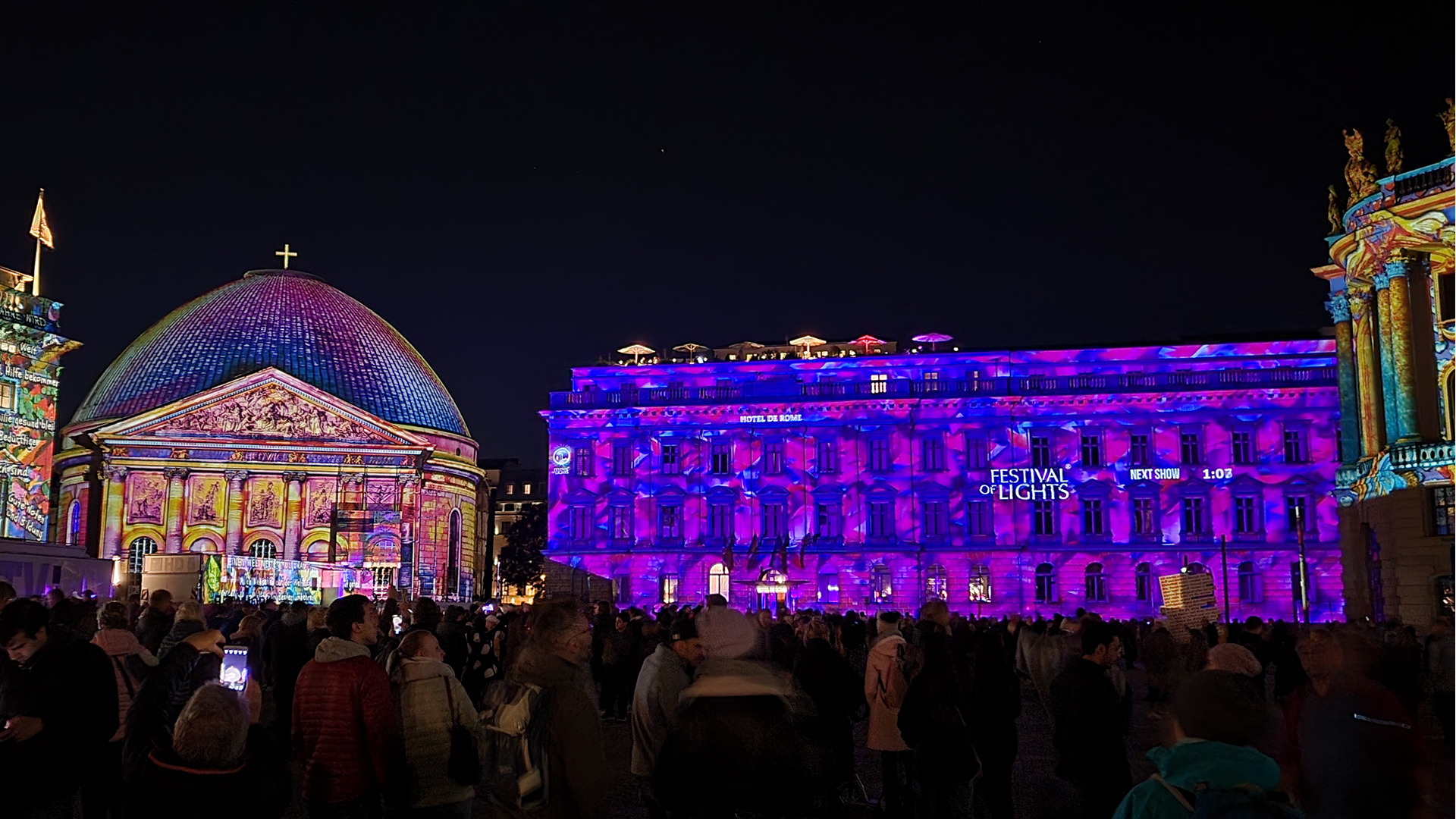VISION OF OUR FUTURE
The 18th annual Berlin Festival of Lights (BFoL) took place between 7th-16th October this year and showcased a total of 70 works of art, created by 90 artists, from 12 different countries around the world, at over 35 venues across the city. Berlin became a glowing stage for the brightest lighting installations ready to address and highlight this year’s motto – “Vision of our future.”
At this point it is worth mentioning one of the important back stories to this year’s event, the stark energy crisis that has been tightening its grip on Germany. With rumours circulating that the worst still to come – including planned blackouts, a concept that many Germans have not experienced in their lifetime – the question around holding an extravagant, energy-hungry festival prompted fierce public debate. The response to these questions was to promote the most energy-efficient festival ever staged: with a quoted aim to consume 75% less power than previous years. All press releases highlighted the alteration in the scale and breadth of this year’s installations, emphasising the fact that all of the lights used at the festival were LED and that 100% of the energy used was generated by renewable sources.
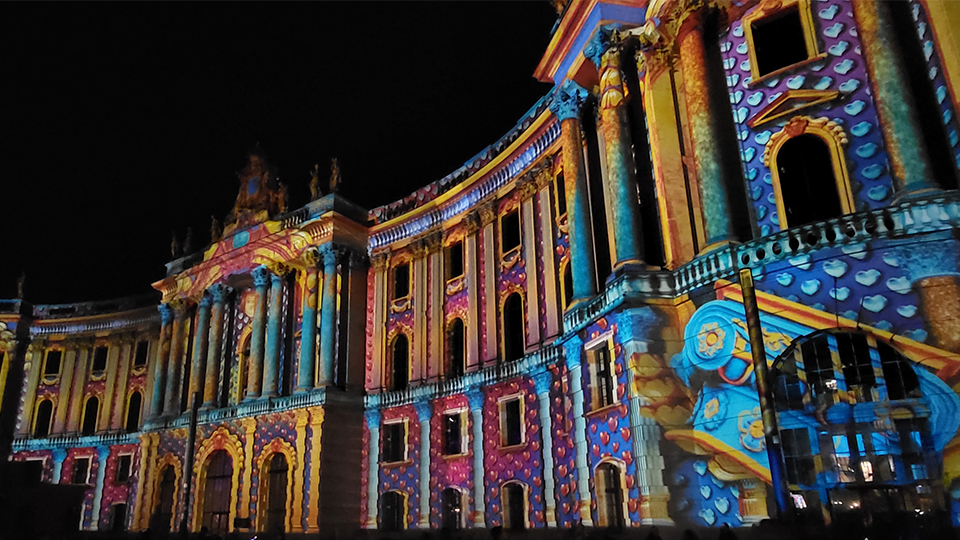
With the festival theme being “Vision of our future,” I ask myself, what will our future look like? I noticed two opposing paths of engagement that addressed this topic. The first saw a number of installations that explored deconstructing our contemporary world, they presented mechanical and technological elements that will help us progress into the future. The other path was more aspirational and emotional; many installations presented visions of optimism and hope, displaying messages of how we can strive for a better tomorrow.
The BFoL is an important date in the social and economic calendar of Berlin, and this year was set to be a much-needed comeback after the significantly curtailed attendance of the pandemic years. Thankfully, it appeared to be just that – as the nights drew in, the city streets quickly became packed with people of all ages and the atmosphere was one of great joy and wonderment. Luckily the weather held for the weekend that I was there, seeing as the festival is largely outdoors, with art being projected onto buildings and within squares, I was lucky that it did not rain, even though it was pretty cold.
Two key lighting techniques stood out to me this year. By far the most prominent was pixel-mapping projection. Artists projected specially commissioned video clips onto landmark buildings including the Brandenburg Gate, the Berlin Television Tower, the Bebelplatz and Charlottenburg Palace to name a few. The subject of installations ranged from heavily themed narratives such as the war in Ukraine, collaborations between nations and children wishing for the future; to purely graphical, abstract presentations, one was even created in association with artificial intelligence. The second technique was more lo-fi: internally illuminated sculptures. A number of these sculptures were static, “Peony” at The Playce Entrance of Potsdamer Platz for example. Others were kinetic, like the “Lightbattle III” also at Potsdamer Platz or “Les Luminéoles” – “The floating whales,” in front of the Berlin Cathedral.
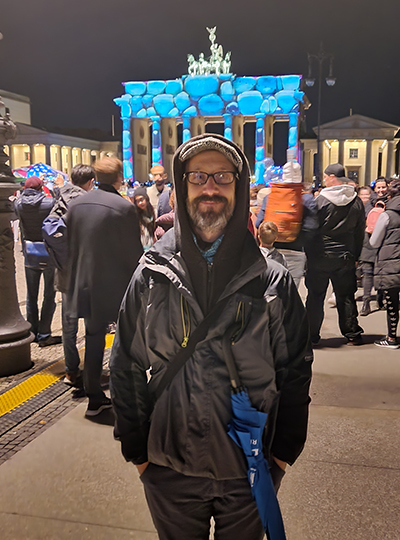
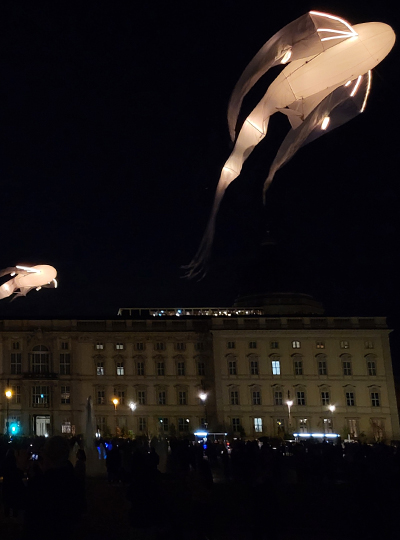
Each of the installations that I saw were clearly the result of careful planning and great craftsmanship. They brought much excitement to people and truly celebrated the human spirit. I must admit that although the video projections clearly required great technical skill in planning and execution and were very impressive in their scale, I couldn’t help but think that they were somewhat predictable. Personally, it felt far more magical to see a human puppeteer making a giant LED whale “swim” in the air, in synchronisation with two others, than to simply cast my eyes up to a large format video clip playing on the side of a building. Followed by the next installation – yet another video clip projected onto another building. Finally, I can’t not mention a personal favourite – Darth Vader fishing in the canals of Berlin with an illuminated red rod replacing his lightsaber!
In summary, it’s great to see so many people coming together and celebrating light art. It’s reassuring to see that authorities are eager to continue to provide such cultural and artistic platforms whilst also pushing for sustainability and being environmentally responsible. I’m already looking forward to seeing what 2023 brings.
